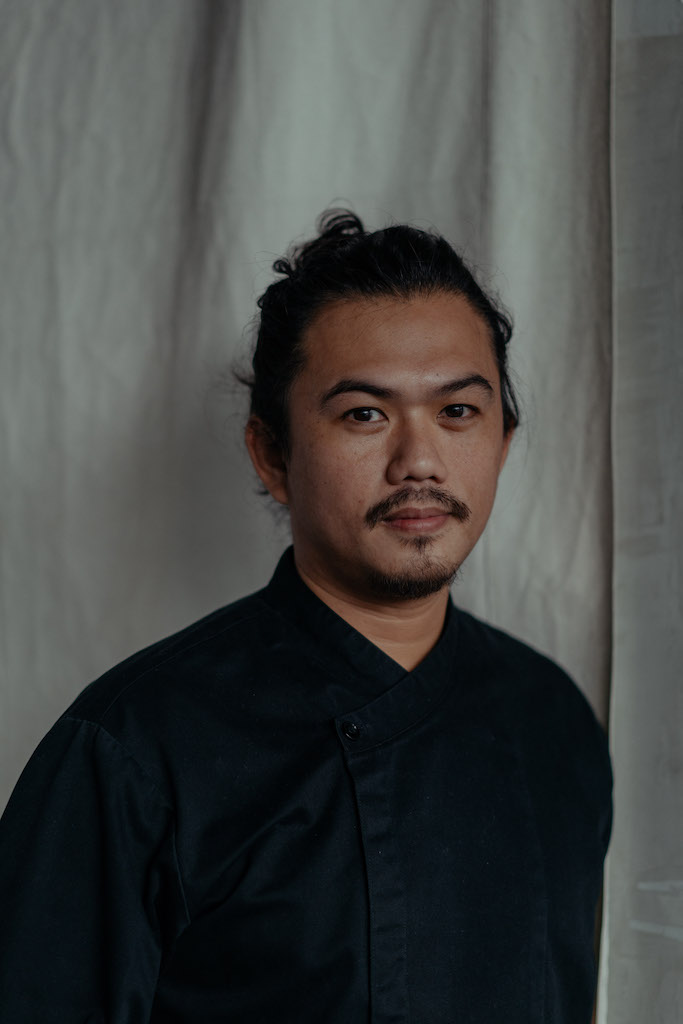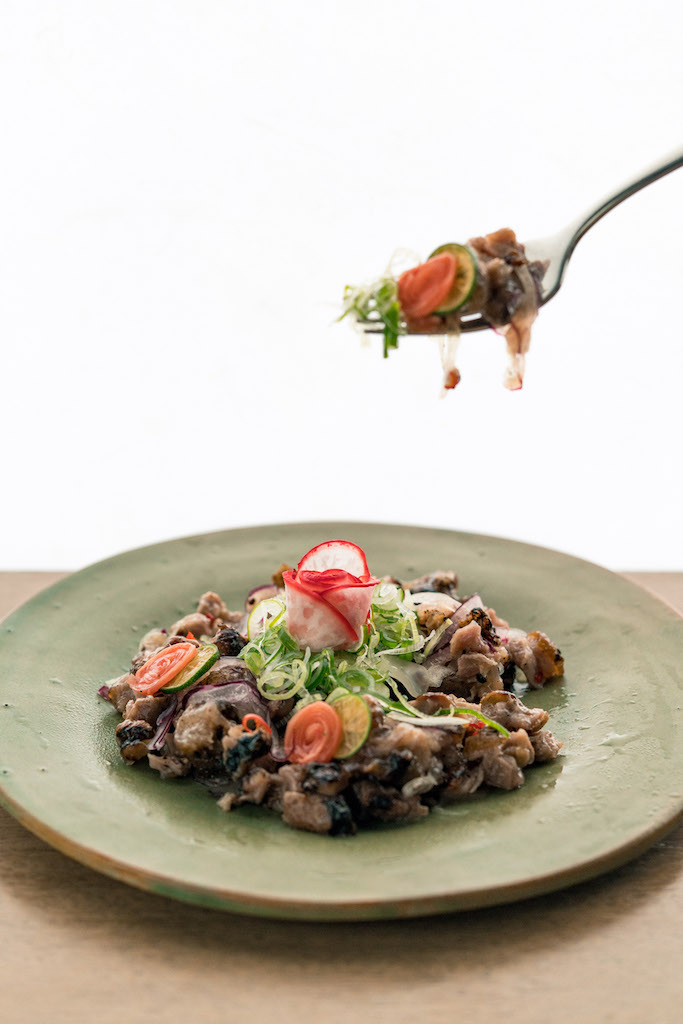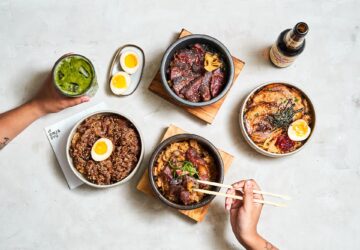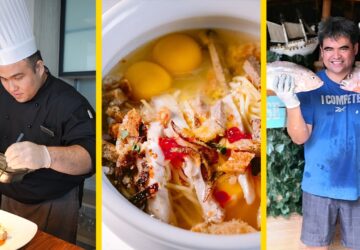Kalel Chan’s first post-graduation job was not in the kitchen but at the front desk of a hotel. And while he recalls a certain fondness for the clean air of the setup, and the sophisticated busyness it evoked, he resigned after just nine days. “I got really bored. Imagine just sitting down for hours, taking reservations. I could hear my watch ticking. It just wasn’t for me,” he says.
The discontent extends beyond making for a fairly interesting dinner party anecdote, as it was mostly because of this listlessness that the 38-year-old soon found himself in the kitchen. But before a career shift, there was this: a period of aimlessness. Then word got out that M Café was hiring. A friend of Chan’s encouraged him to apply, but he was hesitant. “What’s the shift like?” he asked. His friend countered, rather bluntly: “Ano ba’ng plano mo sa buhay?”
He was speechless. There were no plans to speak of simply because he didn’t have any. Chan likes to think of that moment as a slap in the face, one that had such a profound effect on him that he was soon outside the doors of M Café, sitting in an interview with the restaurant’s then-executive chef Sau del Rosario. The one question Chan remembers del Rosario asking wasn’t even directed at him: “Archie [Chan’s friend who set up the interview], ready na ba ’to?” Finally he turned to Chan, telling him to go home.

The interview couldn’t have gone better. Going home meant getting the things he needed for his first day at the restaurant. “It is still very vivid to me. I remember enjoying the adrenaline rush in the kitchen.” He spent the day doing prep work, standing in close proximity to the line cooks. He watched them in excitement, witnessing the stress and the burns and the cuts that he himself would eventually endure on a daily basis. But perhaps endure is not the right word to use, because it didn’t take long before the physical strain became secondary to the joy of cooking. “It was never my dream to become a chef, but I remember thinking at that moment, ‘This is for me,’” he says.
The initial reluctance with which Chan took on the role of a chef provides an interesting contrast to his rich culinary upbringing. Growing up in La Union with a large family of home cooks, he was no stranger to grand spit-roasts, raw meat dishes like ata-ata, and early morning trips to the market for warm, freshly butchered beef and free breakfasts at his grandmother’s market stall. He also started cooking when he was just seven years old.
“It was never my dream to become a chef, but I remember thinking at that moment, ‘This is for me,’” Kalel Chan says.
“The first thing I ever cooked was instant noodles. I was really into it when I was a kid, and my mom wasn’t happy about that [laughs]. So I would ask money from my dad and make our cooks buy the noodles. I’d watch them cook it, and soon enough, I was cooking by myself. You find a way.”
And so he did. Chan is now the long-serving corporate chef of the Raintree Restaurants group, for which he handles multiple restaurants including Izakaya Sensu and Chotto Matte in Bonifacio Global City. How to describe a job that requires one to be in multiple places at the same time? The word impossible comes to mind, but Chan prefers to call the whole thing “crazy.” “The secret is technology,” he says. “And people, of course.”
The logistics can be a nuisance. But as far as career hurdles are concerned, this was nothing. It could be cumbersome, sure, but he always has his staff—multiple sets of them—to turn to and learn from. What were considered feats in Chan’s working life were things that threatened survival in an increasingly competitive industry. “There are so many restaurants and investors now, but there are very few chefs. Every month, you see five or six restaurants opening. Maybe that’s a good thing because it raises the bar, it encourages competition. But the problem is, how do you sustain that? How can your restaurant survive?”
“We want to build a loyal market, ’yung hindi lilipat sa iba after eating in your restaurant once or twice. We don’t want to be a trend,” says Kalel Chan.
Chan’s diagnosis of the situation is that new restaurateurs rely too much on trends. He’s well aware of the often volatile nature of public attention, and so instead he finds recourse in the idea of hard-earned loyalty. “We want to build a loyal market, ’yung hindi lilipat sa iba after eating in your restaurant once or twice. We don’t want to be a trend.” Amid the chaos surrounding diners’ steady obsession with fleeting innovations, his strategy is to step back—that is, by sticking to the classics.
“The thing is, people will still eat the classics. But because of the influence of social media now, I think Filipino diners have become less loyal—at least compared to older diners. Tingnan mo ’yung mga lola na they just want to eat in this one place. That’s why restaurants like Via Mare are still thriving,” he argues.
Serving good traditional food will secure him bits of long-term support from a sea of capricious diners. That much is clear to him. Chan maintains a characteristic consistency in his general disregard for plotting concrete plans, admitting that he’s not entirely sure of what he wants his future to look like. But it definitely won’t involve staying put.
Shifting from observer to participant—this is Kalel Chan’s gift. He can’t just sit and watch.
Goat papaitan
Serves 2-3

Ingredients
400 grams goat meat, skin on
1½ liters water
3 pieces bay leaf
2 tablespoons vegetable oil
10 grams ginger, minced
10 grams garlic, minced
40 grams white onions, minced
½ cup calamansi juice
2 tablespoons beef or goat bile
2 tablespoons white vinegar
40 grams onion leeks, thinly sliced
Salt and pepper
Procedure
- Boil goat meat in water with bay leaf over medium heat for about an hour, or until tender. Let cool.
- Cut goat meat into strips then set aside, along with broth.
- In a separate pot, sauté ginger, garlic, and white onions. Add goat stock, calamansi juice, beef/goat bile, and vinegar. Cover and simmer for 2 minutes.
- Add the meat and season with salt and pepper. Simmer again for 2 minutes.
- Serve in a bowl and garnish with thinly sliced onion leeks.
Originally published in F&B Report Vol. 15 No. 2





